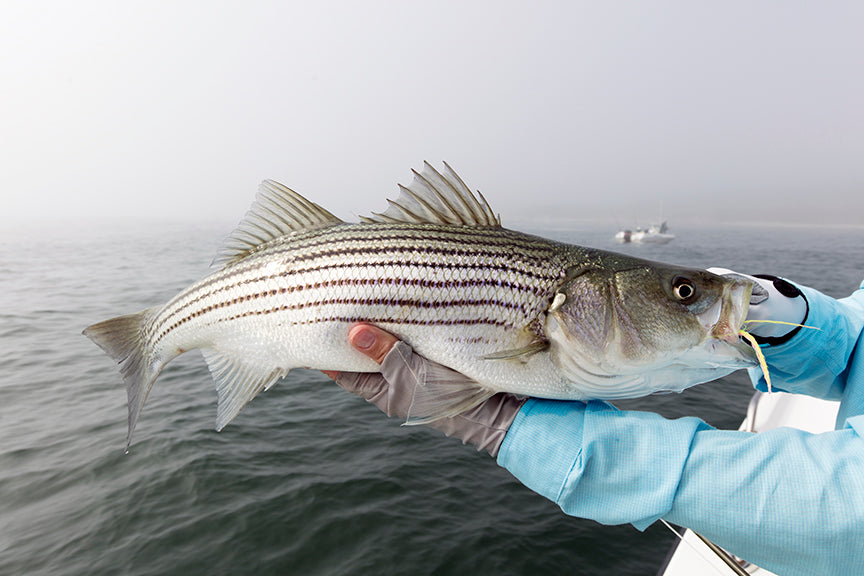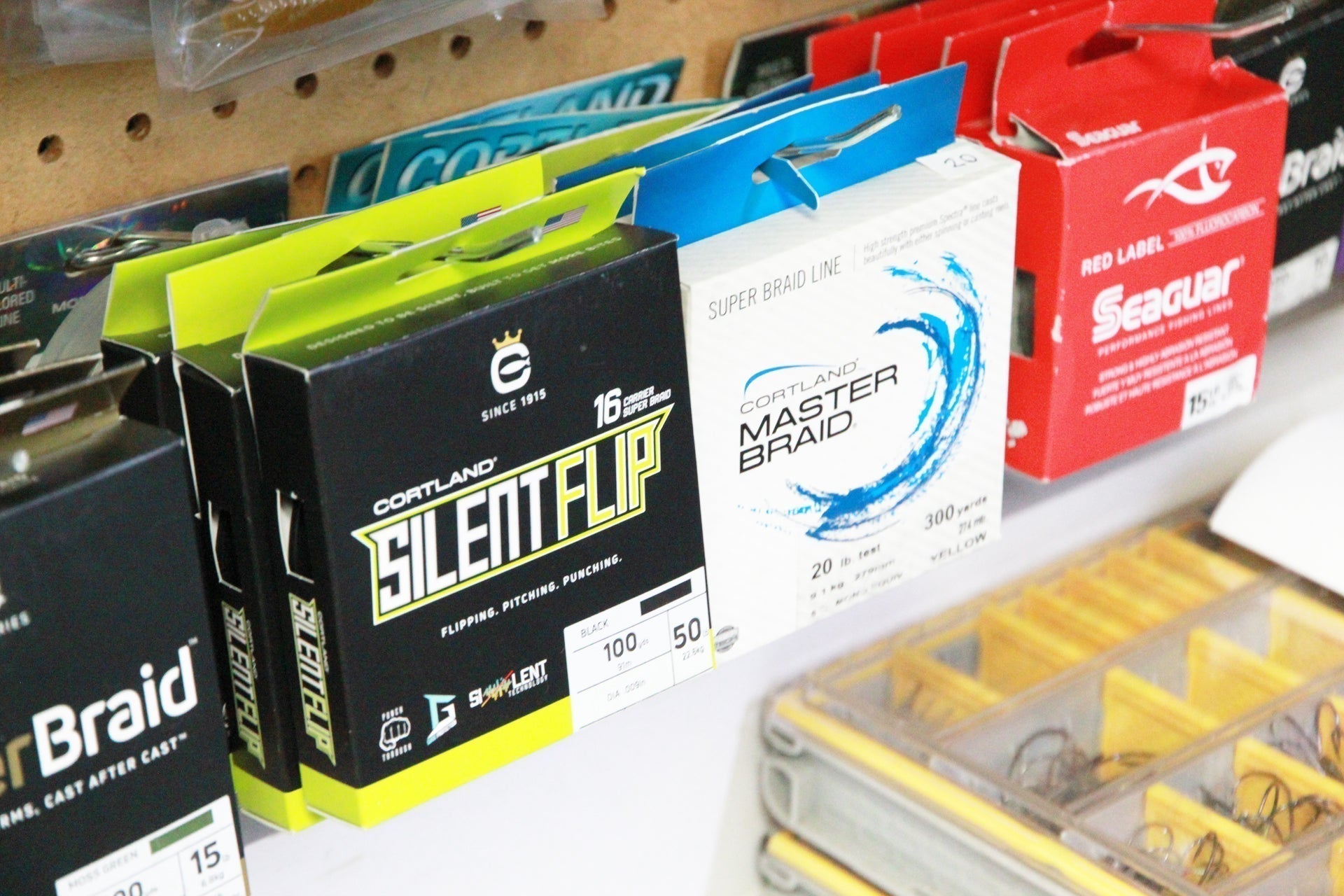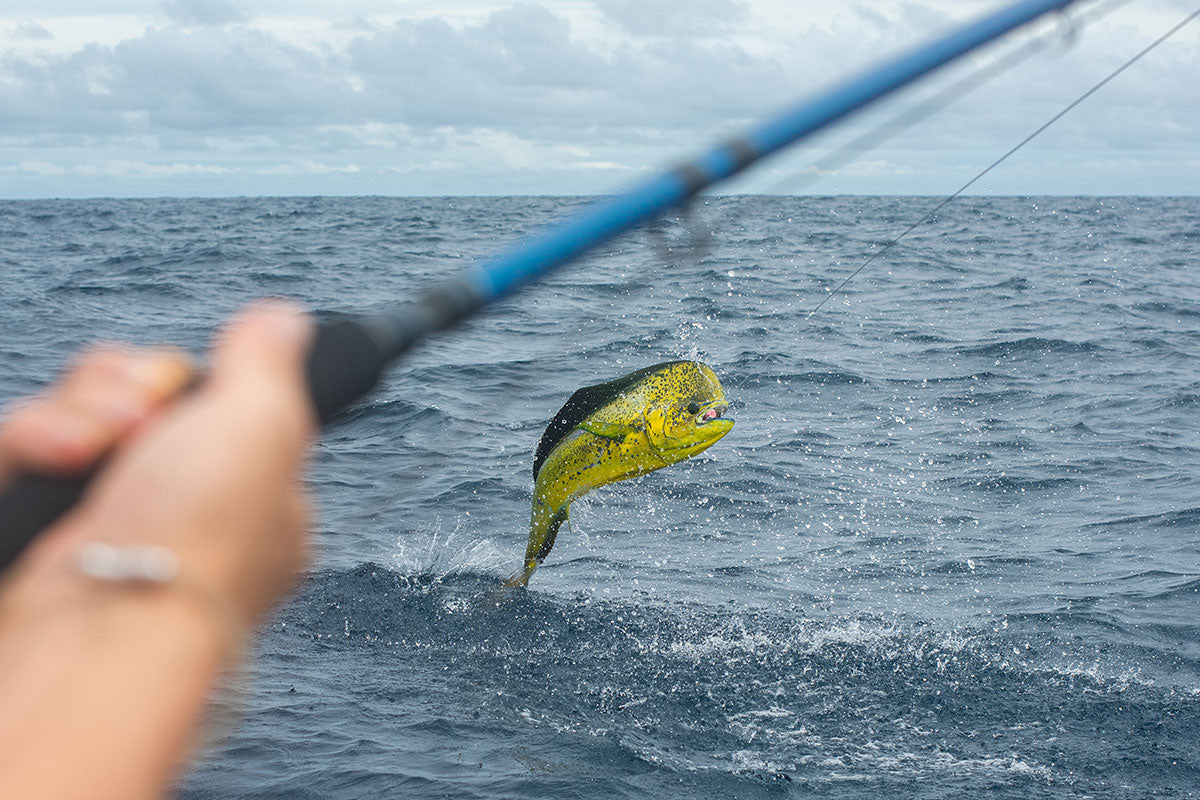Article Written by Paul Dixon. Learn More About the author below / Article Read Time: 7 Minutes
I turned to my client and said, “Are you ready?” I’m sure he thought he was, but once the hook-less plug hit the water and I started to “Walk the Dog,” all hell broke loose. Two giant stripers blasted the teaser, taking turns trying to inhale the “dong.” My client stared dumbfounded at the spectacle as I yelled, “CAST, CAST!” He was so surprised that he had let his fly sink and forgot to water haul. By the time the fly was in the air, it was too late — the pair of monsters had disappeared. All he could say was, “HOLY Sh--!”
To the purist fly guy, “teasing” may be viewed as cheating because you’re throwing a floating plug to attract the fish and substituting the fly as the fish comes for the plug. But as the saying goes, don’t knock it ‘til you’ve tried it. Not only is teasing effective but it’s fun, exciting, and a team sport that all can play where one guy is throwing the teaser and one or two others casting flies. As a fly fishing guide, I find it’s an invaluable tool. It’s a great exercise in casting, accuracy, hooking, and fighting fish. With awesome casters in search of that trophy fish of a lifetime, I might use teasing to search for big stripers. But more likely I’m using it for novice anglers or kids who just want to catch their first bluefish or bass on fly.

I can’t even remember when I first started teasing, but I do remember the old wooden plug I used that I still have in my fishing cave. There is hardly any paint on it, and it’s shredded to bits. If that plug could talk it would tell stories of gorilla blues and 40-plus pound stripers trying to rip the paint off its back. But the teasing game and teasers have evolved over time. So, let’s talk about the game of teasing.

Teasing has been used for almost every game fish that roams the ocean. Almost anything that eats bait can be teased. It’s just a matter of adjusting the teaser size and tackle to deliver the teaser. I’ve used teasers all over the world but mostly in the Northeast for striped bass and bluefish. So, let’s start there.
Teasing is a two-man gig — maybe three, if you got two good fly casters. One is throwing the hook-less plug with a spinning rod and the other is casting the fly. I’m matching the teasing plug and fly pretty much in size and color. I usually carry two teaser rods at all times, one light and one heavy. I also have various fly rods rigged and ready for all occasions.
Starting with my heavy teaser: I’m using a 7-foot Ugly Stick Tiger series, which I know is looked at as an old-time, cheap rod. But the soft glass tip is easy to throw and imparts great action to the teaser. Coupled with my Ugly Stick is a Van Staal VS200 lined with 50lb Cortland Master Braid tied with a Slim Beauty knot to a 6-foot section of Cortland 50# Fluorocarbon. My light teaser is a 7-foot 2-inch Rise Fishing Company Revelle Light Action Rod with a Van Staal VS 75, lined with 20lb Cortland Master Braid and a shot of 30# Cortland Fluorocarbon.

Teasing has come a long way from throwing heavy wooded plugs with mono lines. Three things have vastly improved the game: the Van Staal reel, braided line, and the “Doc.” The Doc is a bone colored 9-inch musky plug that started showing up in guides’ boats years ago in the Northeast. It was a well-kept secret for a while, but that cat is now out of the bag. When worked right, the Doc has an action that monster bass can’t resist. But more importantly the Van Staal reel was made for braid. Let me explain.
With most spinning reels, the bail flips over when you wind it. With the Van Staal, you have to flip the bail. Well, that’s a pain, you might say. But it’s not half as much of a pain as it is to untangle your knotted braid. By flipping the bail by hand, it grabs the line with no slack. It’s the loose pickup of the braid in an automatic spinning reel that results in most snarls — that and the early braided material sucked. Cortland was one of the early pioneers in braid and has the best for what I do. The Master Braid is supple and super strong but more importantly the blue is easily traceable. When teasing, it helps tremendously if the fly caster can see the braid, so as not to hook it with the fly and leader. And trust me, it’s a pain and takes up a lot of time untangling fly, leader, and the braid attached to the teaser. So being able to see the braid is a big plus.

I use Rise Rods — 9 weights, 10 weights, and 11 weights, rigged with floating lines. I like two tapers of fly lines: the Cortland Cold Salt Series Striped Bass Float and the Compact Lines in the Specialty Series. My all-around sight-fishing line is the floating Striped Bass Line because of its shorter taper, which is easier to throw for most people. It works well in most teasing situations. This line is able to deliver a larger fly with minimal false casting, due to its short head. I make a 10-foot leader of Cortland Fluorocarbon XTR Leader Material tapered to 20lb. Or you can buy a premade 9-foot 20lb Saltwater Tapered Leader.
In the Northeast blues and stripers haunt the same waters, so I usually attach a 6-inch trace of Cortland 35# tie-able stainless steel wire. This wire is the easiest and best by far to use. You can use a double surgeon’s knot to tie the wire onto the leader and a figure-8 knot to the fly. The wire is coated, and after a few blues, the wire’s coating may get shredded, but I just peel it back. The wire is still good but it may start curling eventually after many toothy critters go at it, so I just re-wire, as it’s so easy to work with. I tinker with my rods, lines, leaders, and flies until I get the right combos that will deliver a fly quickly and accurately because in teasing you may only have a nano-second to deliver that fly to that monster of your dreams. Teasing is calm coupled with chaos.

While filming the Walker’s Cay Chronicles with Flip Pallot years ago, I asked him what he thought the most important thing is when it comes to fishing. He thought for a moment and said, “Don’t run over the fish’s house.” Truer words were never spoken, especially when it comes to teasing big stripers. If you’re going to run the shoreline, then stop and drift with the current back over the area, you probably won’t have much success. You have to understand the hydrology of your area and what the current is doing. Tide is just indicative of a measure of height and time. It’s an indicator, but understanding the current and current velocity is more important.
For an area I’m going to tease, a slow quiet approach is very important. I’m going way around and up current from where I’m going to tease and stealthily sneaking into the area. I slowly idle in, looking for signs of fish and watching my depth. Generally speaking, I’m going to start in about 30 feet, as I will be casting the teaser into the shore or area that’s shallower. I start outside and then may make the next drift closer to shore, covering all the water that may hold fish. And, yes, you can and will fish much deeper water, in rips, etc. It can work everywhere there are fish feeding but not always if they are on certain baits. Thus, different size rods, reels, lines, and teasers matter. My teasers may range in size from 4 inches to 12-inch monsters, all are floating. Docs, Jumping Minnows, Spooks: they all work. It’s a question of how you work them that matters. I may have a faster retrieve for bluefish because I can often see them finning on the surface. For bass, a much slower walk-the-dog routine seems to be the ticket in most situations.

Once I toss the teaser, I like to walk it one time as it hits the water and leave it. Fish will often get startled when a plug falls from the sky but will look back to see what just happened. Once they realize it may be a big tasty morsel slowly swimming away, they may come back to investigate. I learned this by sight fishing for stripers, bonefish, and permit on the flats. You may think you spooked the fish, but often he swings back around to grab your offering.

I may not know there is a fish there in teasing, but I always assume there is. And maybe you did startle a fish, but one sitting in the current 100-feet away sees the commotion and comes to see what’s up. So, I want to incorporate some movement once the second teaser lands, along with a slow walk-the-dog with pauses. By pausing you accomplish two things: it gives fish a chance to catch up to the teaser, and it makes fish under or on the teaser interested in grabbing when it’s most vulnerable. You just mix it up, and see what works. I have my fly casters constantly doing a “water haul” in front of them. In a water haul, the fly guy is forward casting just a 9 or 10 section of the fly line, leader, and fly, and flipping it back again off the water. This keeps the fly floating and loads the rod when you’re ready to fire. As the teaser gets in range, the angler quits water hauling and begins their false cast to the front of the teaser. If I have two casters, one will cast his fly in front of the plug and the other behind the plug.
Often, you never see the fish following, or there is no sign of a fish. So, you’re always going to cast at the teaser. This is why teasing is a great teacher. You master accuracy, the cast, the hook set, and fish fighting, all in one. It’s also explosive action and a blast with the right crew. It’s best to rehearse and practice a few times before you get ready to begin. Having a right-and-left-hand fly caster is great, but otherwise, I’ll have my strongest caster back-casting.

The good news for novice fly casters is that it often does not require a long cast at all. The fish will often come right to the boat. That’s why I tell my anglers to never, and I mean NEVER, pull your fly from the water, and always watch for follows. I’ve hooked many a fish when the fly is just dangling in the water. If you see a fish follow at the last second, sweep the rod tip and leader, but still leave the fly in the water. I like the under arm, two-handed strip for control and hook setting, but a one-handed is fine. Just make sure you keep stripping till it’s tight. And don’t set by lifting your rod tip. You will be sorely disappointed when that fish of a lifetime comes up, shakes his head, and your fly falls out of his mouth because you used a trout set.
You may be a purist fly guy and think you wouldn’t even consider throwing at a teaser. But I guarantee you that once you see a 30-pound bass knocking that teaser five feet in the air you will change your tune real quick. Teasing is a great teacher, deadly effective, and just plain fun. So give it a try and maybe that mongo bass or ‘gator blue of your dreams is just a cast away.

About the author
Paul Dixon, a native of Newport Beach, CA, became an angler at age three, when his mother handed him his first fishing rod. He began fly fishing at 16 in a summer job at a fishing lodge on Henry’s Lake in Idaho, honing his skills on the legendary Henry’s Fork and Madison River. Returning to Southern California in 1973, he pursued his new-found passion on the beaches of California and Baja, Mexico, while majoring in business at the University of California at Irvine.
In the mid ’80s, Paul moved to the East Coast, and began fishing for striped bass and blue fish in the waters off of Long Island. He ran the fly fishing department of Orvis New York for five years, and with Randy Carlson, began one of the first Orvis salt water fly fishing schools. In 1994, Paul opened Dixon’s Sporting Life in East Hampton, while developing To the Point Charters.
Products Mentioned in this Article
Master BraidFluorocarbon XTR Leader Material
Cold Salt Series Striped Bass Float
Tie-Able Stainless Steel Leader Material


